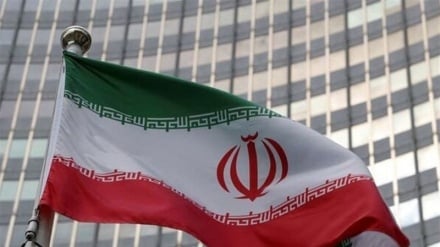Sectarianism; Aal Khalifa’s tool for repressing Bahrainis
The popular uprising of the people of Bahrain continues despite the vain attempts of the regime to repress the revolutionaries, including torturing, jailing and killing many of them. The Aal-e Khalifa minority is now resorting to another dirty trick in an attempt to avert the inevitable, that is, the end of its illegal rule.
The significant point about the Bahraini uprising is the involvement of over 30 active parties and political movements in the Persian Gulf island state where a majority of them are Shi’a Muslims. From this number, 6 groups including; al-Wafa, February 14 Revolution, February 14 Revolutionary Coalition, Ahrar al-Bahrain, February 14 Youth Coalition, and Islamic Scholars Council are demanding overthrow of the repressive Aal-e Khalifa minority regime of Bahrain. Some other parties, led by al-Wefaq, are calling for political reforms and allowing the Shi’a Muslims of the country to get involved in politics. Some analysts suggest that presence and participation of these groups and movements not only does not present an opportunity for the Bahraini Revolutionaries but also it can pose a threat to the uprising process.
Odds are that the Aal-e Khalifa itself with a guidance from Britain as a staunch supporter of the repressive minority regime has paved the way for their foundation. Furthermore, it could itself had hands in foundation of some such parties in a bid to create divisions and fan tensions among the Shiites and the anti-regime camp. In fact, foundation of such a big number of political parties and movements with limited members in a country with a very small population not only is not a strong point for the revolution but also is considered a weak spot that carries the potentials of distancing the key anti-regimes groups from their major objectives. Actually, multiplicity of the parties and movements can in the long run send the revolutionaries exhausted and disappointed.
On the other side, although the highly complicated political scene of Bahrain can be depicted as a simple picture of a Sunni minority ruling over a repressed Shi’a Muslim majority, it should not be disregarded that during the history of Aal-e Khalifa's rule over Bahrain, which began when these pirates from the Khor Abdullah waterway between Kuwait and Iraq seized Bahrain at a time when the central government in Iran was weak, there have always been some Shi’a Muslim groups that supported the regime, and at the same time there have been Sunnis that opposed the regime. But as the uprising continued unfolding, both sides have witnessed a considerable shrink in their number. Many of the Bahrainis from different religious beliefs as well as different political views are admitting that the social structure of the Bahraini community has been torn apart, paving the way for an unprecedented boom of sectarianism.
The pro-regime media along with the social media linked to different religious groups are promoting especially anti-Shi’a Muslim community propaganda. Some of them even promote fears that Bahrain could be turned into another Iraq, aiming at intimidating the Sunni community of the island. Although such fears for those who know Bahrain as a peaceful country with a law-abiding nation look like a bit of exaggerations, the history of the sectarian clashes in other places shows that increase in use of the slogans that justify violence conducted by a minority from both the pro-regime and opposition sides can to a large extent be risky. In fact, although the uprising in Bahrain is a comprehensive, and not a solely Shi’as-led, Revolution, extensive sectarian policies of Aal-e Khalifa on the one hand and the foundation of the republican coalition by some of Shi’a opposition groups which demanded removal of the ruling family on the other hand have caused a large-scale shrink in the level of cooperation between the Sunnis and Shi’a leaders. Actually, many of the Sunnis in Bahrain assumed that the desired form of republic was a Shi’a Islamic republic.
Such fears are fueled in the society by majorly state-run or pro-regime media. Their activities are referred to in a part of a report by UN-launched Bahrain Independent Commission of Inquiry. The probe, also known as Bassiouni Commission, asserts that labeling the opposition groups as traitors and enemies fanned tensions in the society. Additionally, as part of suppressive policies of Aal-e Khalifa, the Shi’a Muslim citizens of Bahrain were unfairly detained and interrogated at work places. Many of them were fired from their state jobs. Many are disrespected at the checkpoints, in detention, at police stations, and in prison. At the same time, at least 180 mosques and religious institutions of the Shi’a Muslims were destroyed by the security forces. Economically, the cooperation between the regime and the Shi’a community was weakened and at the present time, many of the Shi’a citizens are in search of jobs out of the country.
The Bahraini citizenship granting to the foreigners was followed in a broader range by the Aal-e Khalifa regime after the revolution of 2011. In addition to try to change the demographic balance of the society in favor of the Sunni population, by citizenship granting, the regime seeks to justify its claims about the uprising being a sectarian move linked to the Islamic Republic of Iran, and so to put it down. Some of unconfirmed reports suggest that the number of the Sunnis who received Bahraini ID cards since start of the revolution has touched 300,000. A majority of these new citizens who are Pakistanis, Balochis, Yemenis and even Iraqi Ba'athists following receiving Bahraini citizenship joined the security and police forces and were deployed to repress the revolutionaries. In general, the government resorts to an array of instruments to impair the revolutionary forces. Faction building is one of these significant instruments. As long as the political parties and movements are not united, no progress is made.
AS/MG


